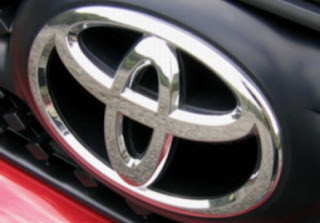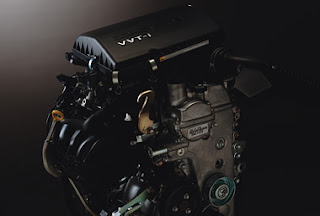About Toyota Motor Corporation - Car Showroom: Toyota Motor Corporation (TMC) (Japanese: トヨタ自動車 株式会社) TYO: 7203.T, NYSE: TM, LSE: TYT), is a Japanese automobile company, based in Toyota, Aichi, providing financial services, and also participate in other business areas. TMC is a member of the Toyota Group and produce cars with Toyota and Lexus brands, and have most of the Daihatsu.
History
Toyota Motor Corporation was founded in September 1933 as the car division of Toyota Automatic Weaving Factory. The cars division were then separated from the main company on August 27, 1937 to be the Toyota Motor Corporation until today.
Starting with the textile industry, Toyota then arised as one of the leading automobile manufacturers around the world. The Toyota which is well known as 1 car every 6 seconds producer, found to have named Toyota more because of their mention naming the Toyota esier and mor convenient than using the family name of its founder, Toyoda. Those are some exciting milestone in the journey of Toyota's business.
Toyota is the world's largest car manufacturer in the unit and net sales. This Japan's largest manufacturer produces 8 to 8.5 million vehicles worldwide every year.
Toyota was founded by Sakichi Toyoda, who started from a textile industry (Marimutu Sinivasan, the founder of Texmaco, big businessmen textiles in Indonesia, tried to imitate it by developing automotive sector branded PERKASA).
 Compared with other automotive industries that use the name of its founder as a trademark, such as Honda, founded by Soichiro Honda, Daimler-Benz (Gottlieb Daimler and Karl Benz), Ford (Henry Ford), Toyoda name not be used as a brand. Due to depart from a simple idea and vision that time, the mention of Toyoda less pleasant and not so familiarly known then modified to be Toyota.
Compared with other automotive industries that use the name of its founder as a trademark, such as Honda, founded by Soichiro Honda, Daimler-Benz (Gottlieb Daimler and Karl Benz), Ford (Henry Ford), Toyoda name not be used as a brand. Due to depart from a simple idea and vision that time, the mention of Toyoda less pleasant and not so familiarly known then modified to be Toyota.Sakichi Toyoda was born in February 1867 in Shizuoka, Japan. This man is known as the inventor since he was a teenager. Toyoda devoted his life in studying and developing textile machine assembly. In the age of 30 Toyoda has finished his work on the loom machine. This thing led him to establish the early of Toyota assembling company, the Toyoda Automatic Loom Works, Ltd. in November 1926.
From then the patents of his automatic textile machinery sold to Platt Brothers & Co., Ltd., an English company. What he have got from selling his patent, he made it as an investment on developing his automotive division. Starting in 1933, when Toyoda build the division of automotive, the team then much controlled by his son Kiichiro Toyoda, producing endless leading innovations in that time. Engine Type A was completed in 1934. A year later the first prototype of this machine assembled to their passenger car products , A1. Toyoda automotive division also produces truck model G1.
In 1936 they launched their first passenger car, Toyoda AA (at that time was still using the name Toyoda). This model was developed from the prototype model A1 and equipped with body and engine A. This vehicle is from the beginning expected to be a people's car. The concept of Toyota's products that continuing until today.
 After four years it was considered to establish an official automotive company and separated from their main industry, textile industry. Then in 1937 they officialy established their automotive division as a company named Toyota, not Toyoda like the name of their textile industry. The name of Toyota in the Japanese language are represented in the 8 characters, and eight is a lucky number for Japanese people. Another reason that makes sense is that automotive industry is a business of lifestyle and even in mentioning of the name (and what it sounds like), to be so important. Because the name Toyoda considered too stiff in the dynamic business like automotive industry, then it was changed to Toyota that considered better. No doubt, 1937 is an important era of the birth of the Toyota Motor Co., Ltd., the embryo of a giant Toyota Motor Corp. (TMC) today.
After four years it was considered to establish an official automotive company and separated from their main industry, textile industry. Then in 1937 they officialy established their automotive division as a company named Toyota, not Toyoda like the name of their textile industry. The name of Toyota in the Japanese language are represented in the 8 characters, and eight is a lucky number for Japanese people. Another reason that makes sense is that automotive industry is a business of lifestyle and even in mentioning of the name (and what it sounds like), to be so important. Because the name Toyoda considered too stiff in the dynamic business like automotive industry, then it was changed to Toyota that considered better. No doubt, 1937 is an important era of the birth of the Toyota Motor Co., Ltd., the embryo of a giant Toyota Motor Corp. (TMC) today.Kiichiro Toyoda spirit of innovation has never dimmed. Toyota then developed into a powerful vehicle producer. In the era of the 1940s, Toyota worked hard in developing the investment, including to listing the company on the Tokyo, Osaka and Nagoya Stock Exchange.
 When World War II ended, the 1950s is an era for Toyota to proof them as a tough and multipurpose vehicle producer. At that time Jeep was so familiar in Japan. Inspired by this type of car, Toyota then developed a prototype of Land Cruiser and it released in 1950. A year later Toyota officially launched early model of Land Cruiser namely BJ.
When World War II ended, the 1950s is an era for Toyota to proof them as a tough and multipurpose vehicle producer. At that time Jeep was so familiar in Japan. Inspired by this type of car, Toyota then developed a prototype of Land Cruiser and it released in 1950. A year later Toyota officially launched early model of Land Cruiser namely BJ.In July, a test driver Ichiro Taira finished his test on BJ with an outstanding result. Inspired by the Samurai character, Heikuro Magaki who climbed Mount Atago in 1643, Taira drove his Toyota BJ to the Fudo temple in Okasaki. It at once inted to campaign the toughness of this vehicle. Not for long, Toyota Land Cruiser began to compete the dominance of Jeep Willys. And even with the later models, Toyota Land Cruiser is acceptable in a market that was difficult to penetrate, North America. Through this model, Toyota's penetrate into markets around the world, including Indonesia, known as the Toyota Land Cruiser Hardtop FJ40/45. In Africa, the models of Toyota Land Cruiser is used as "Technical" an armed jeeps equipped with light machine guns, heavy weapons or even bazooka (Recoilless bazooka) and used throughout the armed conflict with very tough performance.
 Toyota is not only known through the Toyota Land Cruiser. They also developed a model that became the world's favorite, a small sedan. Through the Toyota Corolla that made its debut in 1966, these first-generation small sedan using rear engine that changed trend of big sedan heading toward a small, economical and compact sedan. In 1975, the Corolla launched into the third generation and has sold more than 5 million units. The amazing thing that is still sustained today. Corolla engine is then used in Indonesia as an engine for a multipurpose family vehicles, "Toyota Kijang" first generation, and known as "Kijang Buaya".
Toyota is not only known through the Toyota Land Cruiser. They also developed a model that became the world's favorite, a small sedan. Through the Toyota Corolla that made its debut in 1966, these first-generation small sedan using rear engine that changed trend of big sedan heading toward a small, economical and compact sedan. In 1975, the Corolla launched into the third generation and has sold more than 5 million units. The amazing thing that is still sustained today. Corolla engine is then used in Indonesia as an engine for a multipurpose family vehicles, "Toyota Kijang" first generation, and known as "Kijang Buaya".At the time Toyota became a global product, they consciously do not have an official logo. And even in Indonesia found that the Toyota-branded vehicles like the Toyota Kijang with logo TOYOTA on the grille of the car bonnet. In 1989 Toyota decided to make logo with two oval circles (ellipse), which form the letter T and the third ellipse would suggest the spirit of understanding in design. The third circle that surrounded the two previous ellipses shaped T, as a proof to keep and influence the circumstances.
In the 1990s, Toyota strengthen the proof that Japanese cars can compete with European and American cars. Toyota Celica succeed to become a world rally champion, and the Toyota Camry became the best-selling car in America.















